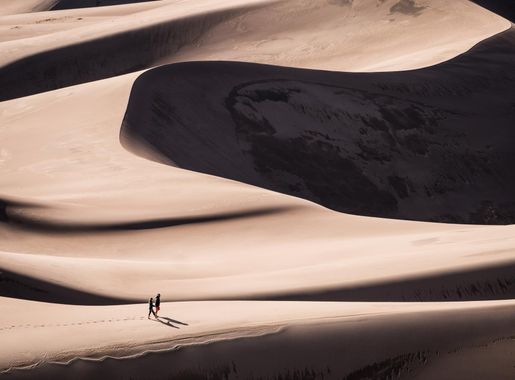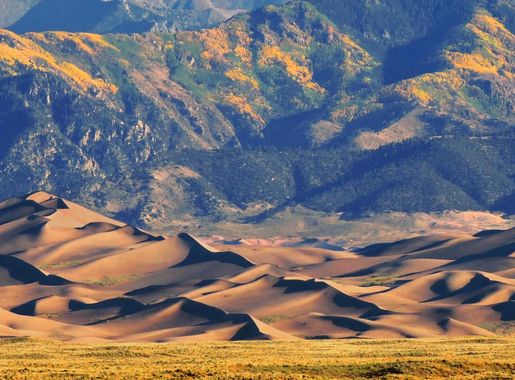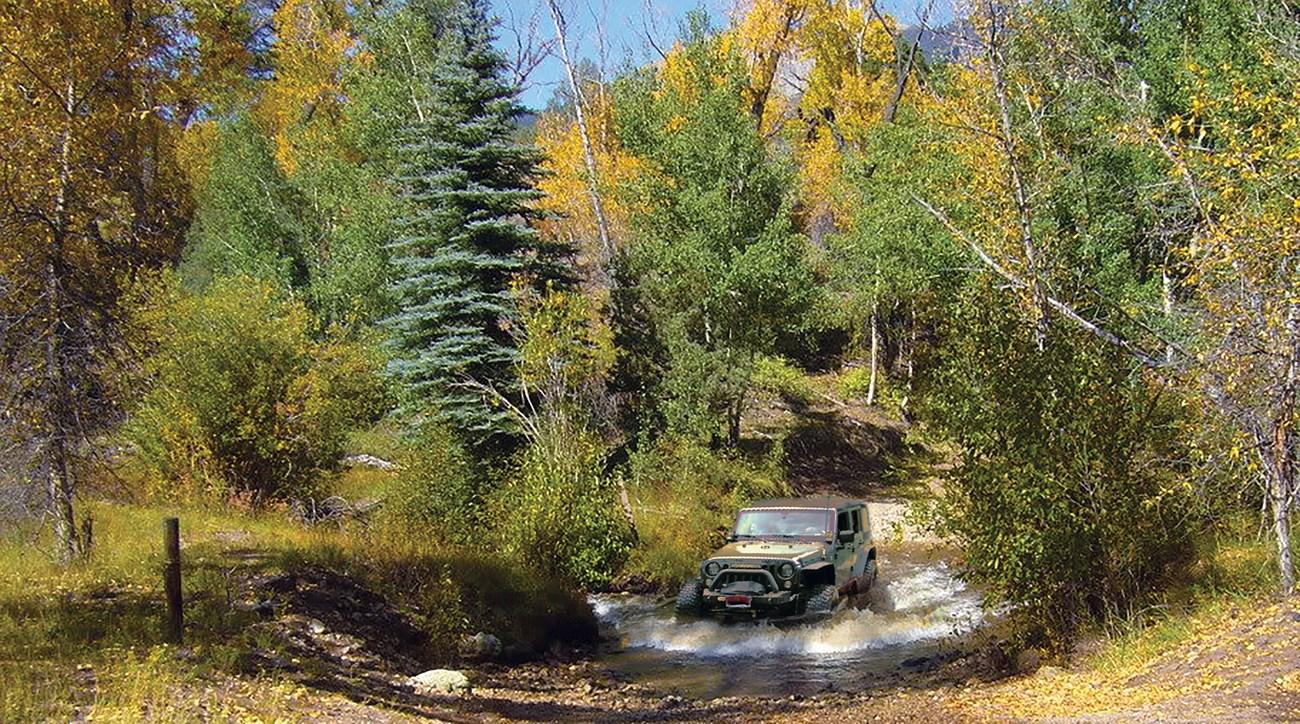
The Majestic Great Sand Dunes: A Landscape Like No Other
Experience the towering dunes, diverse ecosystems, and starry skies of the Great Sand Dunes National Park and Preserve in Colorado, a unique and breathtaking natural wonder.
Welcome to the Great Sand Dunes National Park and Preserve, a unique natural wonder nestled in the heart of Colorado. Here, you will find the tallest sand dunes in North America, standing proudly against the backdrop of the rugged Sangre de Cristo Mountains. This striking contrast between the golden dunes and the lush alpine landscape creates a scene of breathtaking beauty. The park offers a variety of activities for all types of adventurers. Hike to the top of the dunes for a panoramic view that stretches for miles, or explore the diverse ecosystems that thrive in this unique environment, from grasslands to wetlands. For thrill-seekers, sandboarding and sandsledding down the dunes provide an exhilarating experience. In the evening, the park transforms into a stargazer’s paradise, with some of the darkest skies in the country offering clear views of the Milky Way. But the Great Sand Dunes is not just about sand and stars. The preserve includes diverse wildlife, such as mule deer, elk, and black bears, making it a haven for nature lovers. History enthusiasts will appreciate the park’s rich cultural heritage, with ancient Native American artifacts and historic Spanish expeditions adding layers of intrigue. Whether you’re here for adventure, relaxation, or a bit of both, the Great Sand Dunes National Park and Preserve promises an unforgettable experience.
Local tips in Great Sand Dunes National Park and Preserve
- Visit during spring or fall for the best weather and fewer crowds.
- Bring plenty of water and sunscreen, as the sun can be intense on the dunes.
- Wear closed-toe shoes to protect your feet from hot sand.
- Check the weather forecast and be prepared for sudden changes.
- Rent or bring your own sandboards or sandsleds for a thrilling descent.
- Plan a nighttime visit for stargazing, as the park offers some of the darkest skies in the country.
- Explore the Medano Creek during late spring, a seasonal stream that flows at the base of the dunes.
- Keep an eye out for wildlife, especially in the early morning or late evening.
The Majestic Great Sand Dunes: A Landscape Like No Other
Welcome to the Great Sand Dunes National Park and Preserve, a unique natural wonder nestled in the heart of Colorado. Here, you will find the tallest sand dunes in North America, standing proudly against the backdrop of the rugged Sangre de Cristo Mountains. This striking contrast between the golden dunes and the lush alpine landscape creates a scene of breathtaking beauty. The park offers a variety of activities for all types of adventurers. Hike to the top of the dunes for a panoramic view that stretches for miles, or explore the diverse ecosystems that thrive in this unique environment, from grasslands to wetlands. For thrill-seekers, sandboarding and sandsledding down the dunes provide an exhilarating experience. In the evening, the park transforms into a stargazer’s paradise, with some of the darkest skies in the country offering clear views of the Milky Way. But the Great Sand Dunes is not just about sand and stars. The preserve includes diverse wildlife, such as mule deer, elk, and black bears, making it a haven for nature lovers. History enthusiasts will appreciate the park’s rich cultural heritage, with ancient Native American artifacts and historic Spanish expeditions adding layers of intrigue. Whether you’re here for adventure, relaxation, or a bit of both, the Great Sand Dunes National Park and Preserve promises an unforgettable experience.
When is the best time to go to Great Sand Dunes National Park and Preserve?
Iconic landmarks you can’t miss
Great Sand Dunes Visitor Center
Explore the Great Sand Dunes Visitor Center, your gateway to majestic dunes and enchanting landscapes in Colorado's breathtaking national park.
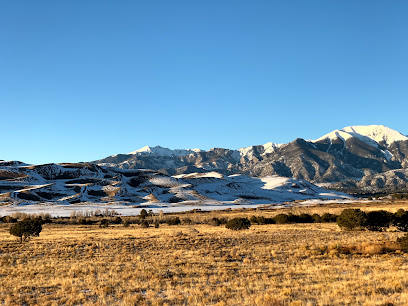
Great Sand Dunes Parking
Discover the breathtaking landscapes of the Great Sand Dunes National Park, the tallest dunes in North America, from this convenient parking area.
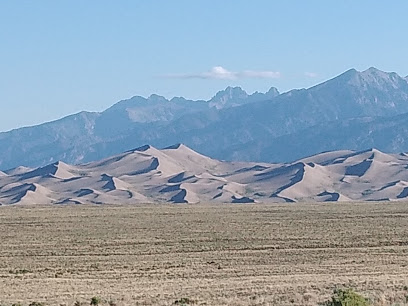
Ramble at Great Sand Dunes National Park
Experience the breathtaking beauty of the Great Sand Dunes National Park Campground, where adventure and tranquility await in Colorado's stunning natural landscapes.
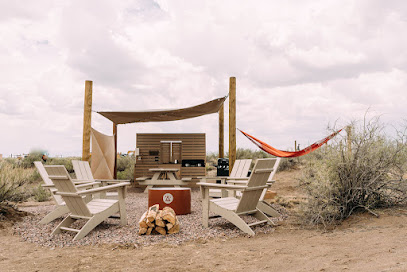
Unmissable attractions to see
Bishop Castle
Explore the enchanting Bishop Castle, a stunning architectural wonder in Colorado, showcasing creativity, intricate designs, and breathtaking views.
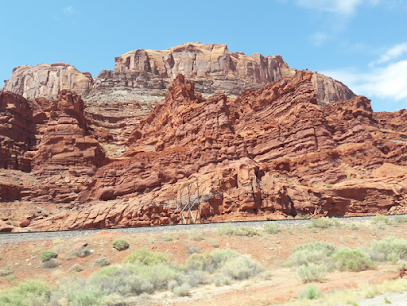
Great Sand Dunes Visitor Center
Explore the majestic Great Sand Dunes Visitor Center, your gateway to adventure in Colorado's stunning natural landscape.
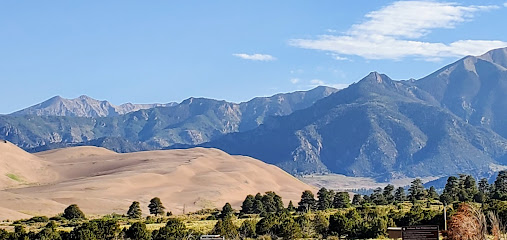
Colorado Gators Reptile Park
Explore the unique Colorado Gators Reptile Park, a captivating zoo and fish farm, showcasing a diverse range of reptiles in a stunning mountain setting.
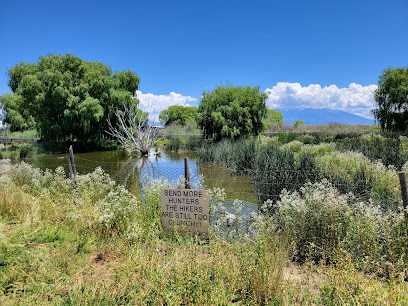
UFO Watchtower
Discover the mystical allure of the cosmos at the UFO Watchtower in Colorado, a unique observation deck for star gazers and UFO enthusiasts.
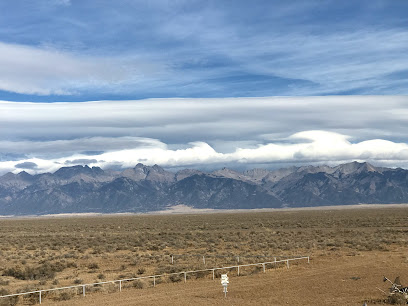
Piñon Flats Campground
Discover the beauty of Piñon Flats Campground in Great Sand Dunes National Park, where adventure and tranquility meet under the stars.
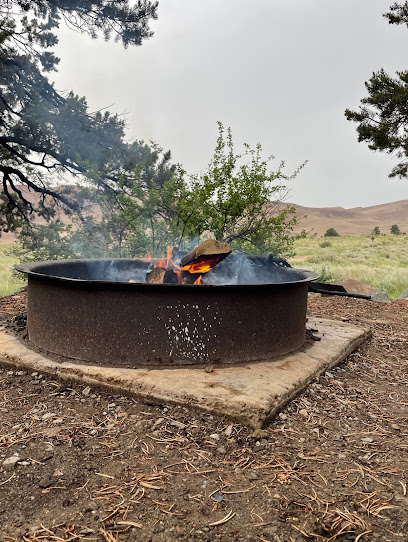
Zapata Falls Campground
Discover the natural beauty and tranquility of Zapata Falls Campground, an ideal escape for outdoor enthusiasts in Colorado's stunning San Luis Valley.
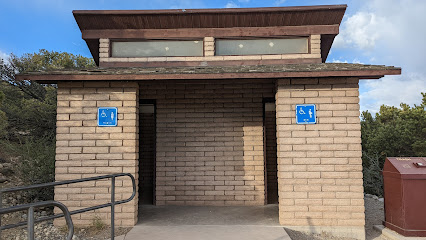
Great Sand Dunes Oasis
Experience the breathtaking beauty of the Great Sand Dunes Oasis, where nature meets comfort in the heart of Colorado's stunning landscapes.

Fort Garland Museum & Cultural Center
Explore Colorado's heritage at Fort Garland Museum & Cultural Center, where history comes alive through engaging exhibits and local culture.
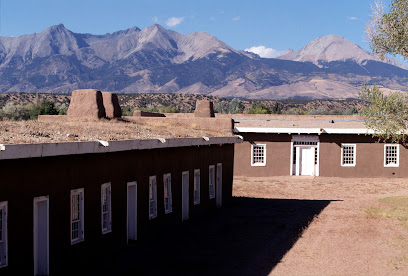
Zapata Falls
Experience the breathtaking beauty of Zapata Falls in Colorado's San Luis Valley, a dual waterfall paradise surrounded by stunning landscapes.
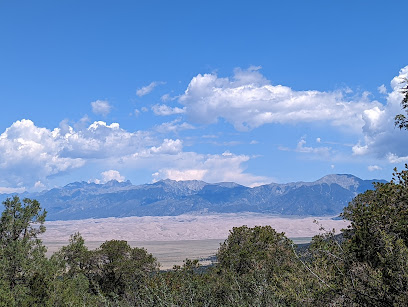
San Luis State Wildlife Area
Explore San Luis State Wildlife Area, a scenic campground and park in Colorado, perfect for outdoor adventures and wildlife observation.
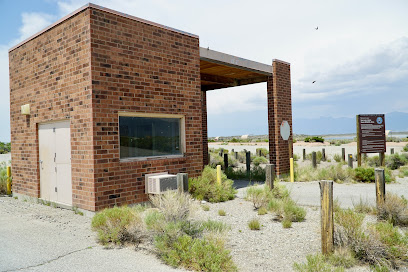
Monte Vista National Wildlife Refuge
Explore the breathtaking landscapes and diverse wildlife of Monte Vista National Wildlife Refuge, a must-visit nature preserve in Colorado.
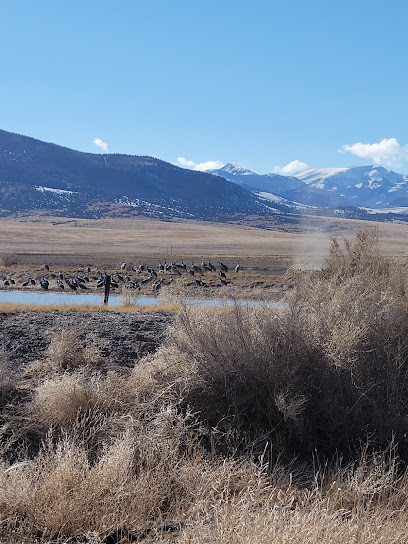
Zapata Falls Trailhead
Experience the stunning beauty of Zapata Falls Trailhead in Colorado, where breathtaking landscapes and invigorating hikes await outdoor enthusiasts.
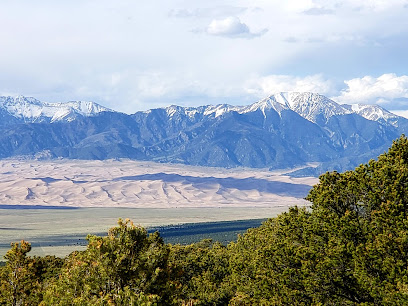
Cano's Castle
Discover Cano's Castle in Antonito, Colorado, a vibrant architectural gem showcasing the creative spirit of its unique builder amidst stunning natural beauty.
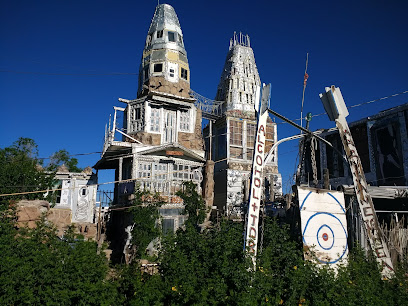
Zapata Ranch
Discover the breathtaking landscapes and authentic ranch experiences at Zapata Ranch in Colorado's stunning San Luis Valley.
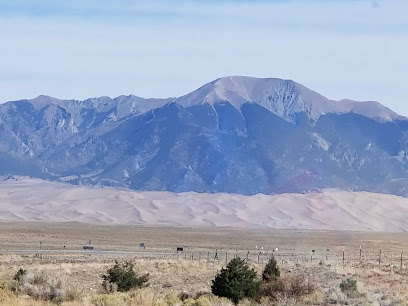
Crestone Ziggurat
Discover the enchanting Crestone Ziggurat, a unique historical landmark blending architecture and spirituality amidst breathtaking Colorado landscapes.

Markets, malls and hidden boutiques
Great Sand Dunes National Park and Preserve
Discover the towering dunes and diverse landscapes of Great Sand Dunes National Park and Preserve, a natural wonder in Colorado.
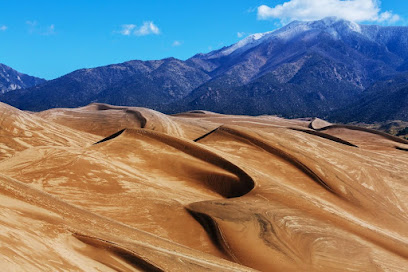
Great Sand Dunes Visitor Center
Explore the Great Sand Dunes Visitor Center, your ultimate gateway to Colorado’s stunning natural wonder and outdoor adventures.
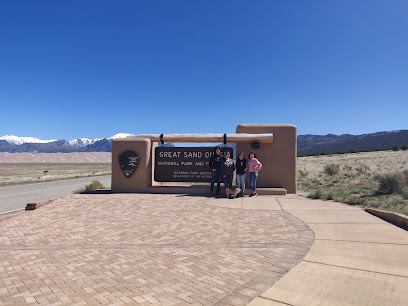
Sand Dunes Recreation
Discover the ultimate family-friendly destination at Sand Dunes Recreation in Colorado, featuring a heated pool, a gift shop, and a cozy restaurant.
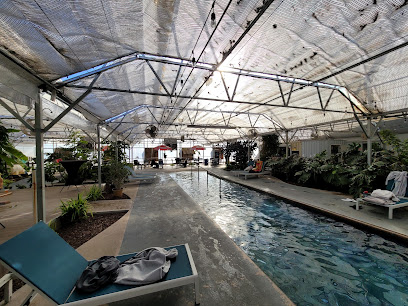
Great Sand Dunes Parking
Explore the majestic Great Sand Dunes National Park from the convenient Great Sand Dunes Parking, your gateway to stunning landscapes and outdoor adventures.
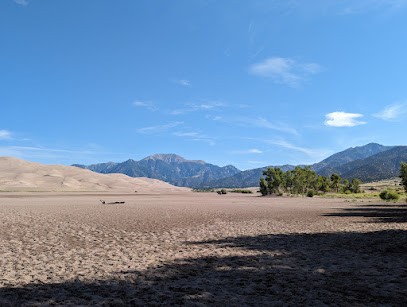
Great Sand Dunes Oasis
Discover the Great Sand Dunes Oasis: a unique campground and gateway to adventure in Colorado's stunning natural landscapes.

Kristi Mountain Sports, LLC - Alamosa
Explore the great outdoors with premium gear and expert advice at Kristi Mountain Sports in Alamosa, Colorado.
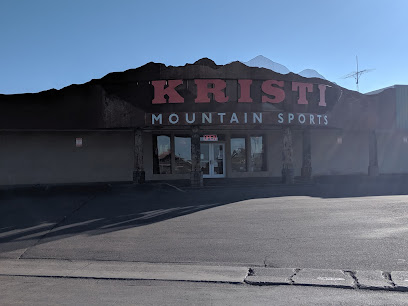
SpinDrift SandBoards
Discover the thrill of sandboarding at SpinDrift SandBoards, your premier equipment rental destination in scenic Blanca, Colorado.
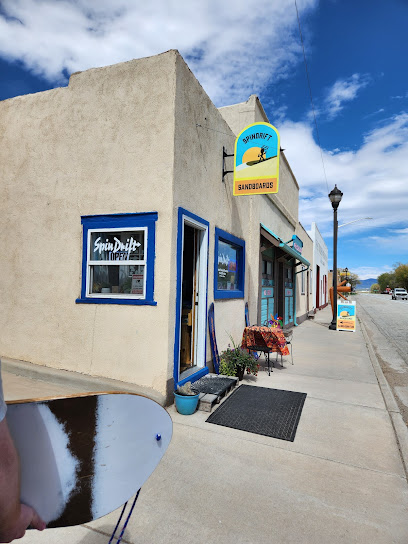
HobbyTown
Explore HobbyTown in Alamosa, Colorado—a paradise for hobby lovers offering diverse products for creativity and fun.
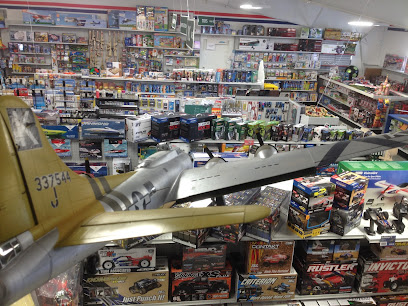
Elephant Cloud Market The Cloud Station
Explore unique local produce and enjoy a cozy café experience at Elephant Cloud Market in Crestone, Colorado.
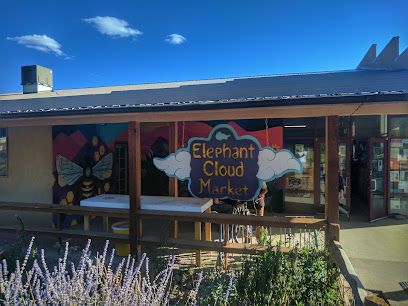
Rainbow's End Thrift Store
Explore unique finds and support your community at Rainbow's End Thrift Store in Alamosa, Colorado.

Crestone Mercantile
Discover the charm of Crestone Mercantile, a grocery and hardware store blending local products with a warm community spirit in the heart of Colorado.
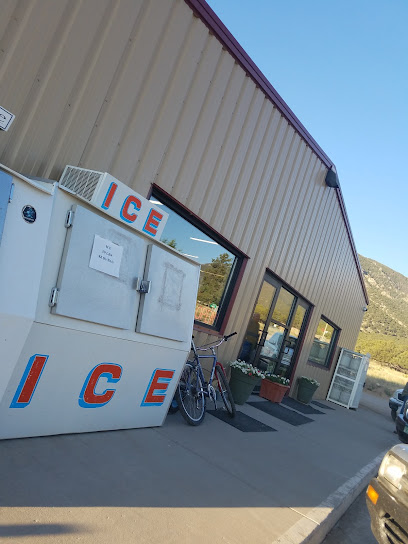
Red Rock General Store
Explore Red Rock General Store in Blanca, Colorado for unique specialty goods, rare beers, and a friendly shopping experience.
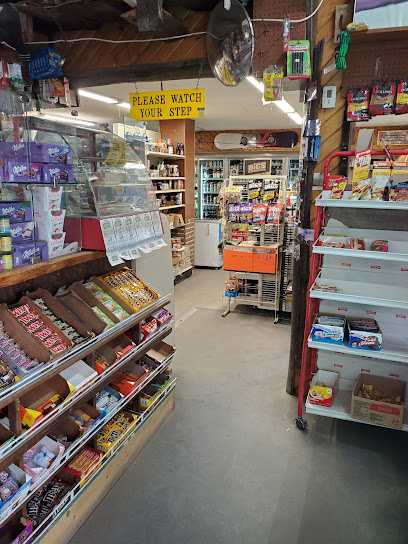
Higher Elevation: A Recreational Cannabis Boutique
Explore the finest selection of recreational cannabis and accessories at Higher Elevation in Crestone, Colorado.
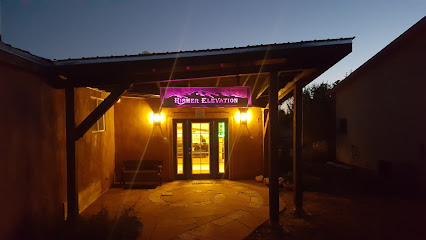
Sacred Spirit Lightwork
Explore holistic healing and metaphysical treasures at Sacred Spirit Lightwork in Crestone, Colorado, your gateway to spiritual growth and tranquility.
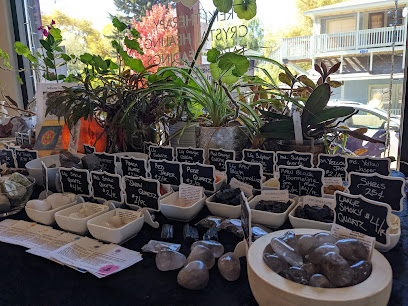
Adams State University Bookstore
Explore the Adams State University Bookstore: A literary haven in Alamosa, offering books, gifts, and university apparel for every visitor.

Essential bars & hidden hideouts
Great Sand Dunes Visitor Center
Discover the gateway to Colorado's breathtaking Great Sand Dunes at the Visitor Center, where adventure and education meet amidst stunning landscapes.
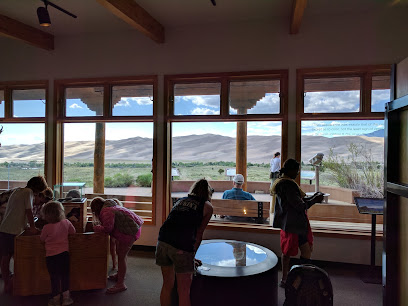
Sand Dunes Recreation
Discover the perfect blend of adventure and leisure at Sand Dunes Recreation, where delicious dining meets exciting outdoor activities in Colorado.
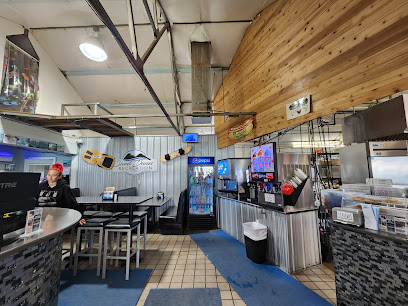
Golden Bee
Experience the charm of a traditional British pub in the heart of Colorado Springs with delicious food and local craft drinks.
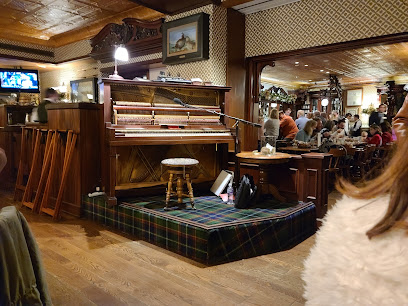
The Purple Pig Pizzeria & Pub
Discover delicious pizzas and a vibrant pub atmosphere at The Purple Pig Pizzeria & Pub in Alamosa, Colorado, perfect for tourists and locals alike.
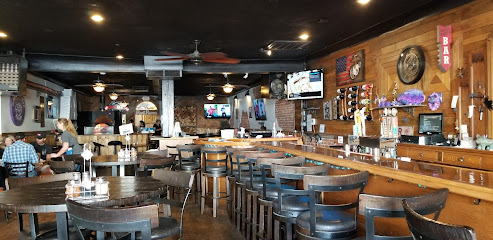
Dog Bar & Grill
Experience the best of La Veta at Dog Bar & Grill, where delicious grill fare meets a pet-friendly atmosphere.

Great Sand Dunes Parking
Discover the breathtaking beauty and adventure awaiting you at the Great Sand Dunes National Park, Colorado's remarkable natural treasure.
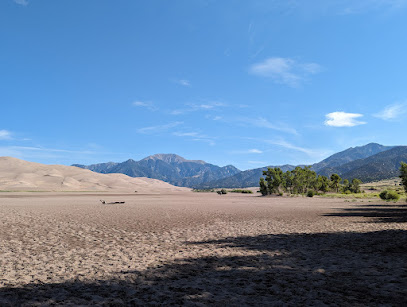
Piñon Flats Campground
Discover the serene beauty of Piñon Flats Campground in Great Sand Dunes National Park, a perfect spot for nature lovers and outdoor adventurers.
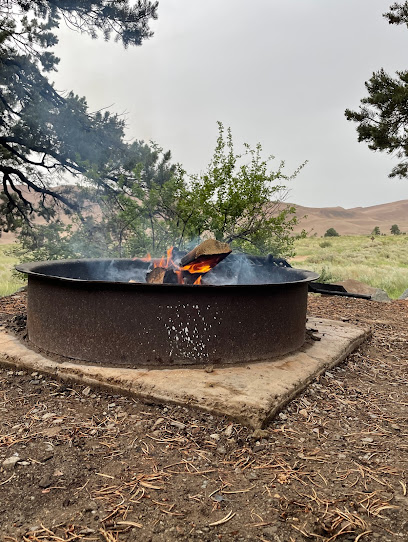
Great Sand Dunes Oasis
Experience the Great Sand Dunes Oasis: a dining, shopping, and camping hub amidst Colorado's breathtaking natural beauty.

Triple Nickel Tavern
Experience the vibrant atmosphere of Triple Nickel Tavern, where delicious hamburgers meet live music in the heart of Colorado Springs.
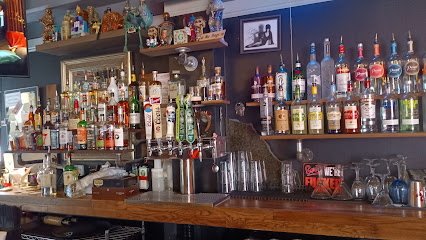
Great Sand Dunes Lodge
Discover the serene beauty of Great Sand Dunes Lodge, your gateway to adventure in Colorado's stunning landscapes.

Emma's Authentic Food Of The Southwest
Savor the authentic taste of the Southwest at Emma's – where every dish tells a story of tradition and flavor.
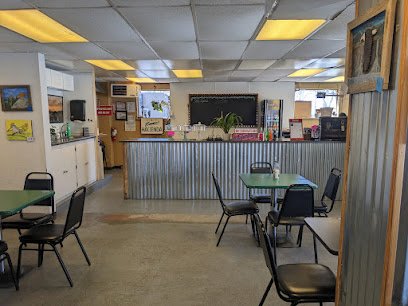
Crafty Canary Brewery
Experience the best craft beers and local flavors at Crafty Canary Brewery in Walsenburg, Colorado, a must-visit for every traveler.
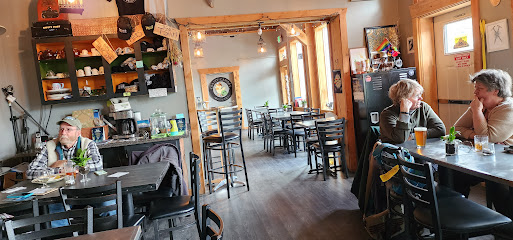
The Friar's Fork & Sanctuary
Experience the culinary delights of The Friar's Fork & Sanctuary, where Italian and Mediterranean flavors meet a vibrant bar scene in Alamosa, Colorado.

Crazy Corner Cafe
Experience the local flavors of Alamosa at Crazy Corner Cafe, where delicious food and a warm atmosphere await every visitor.
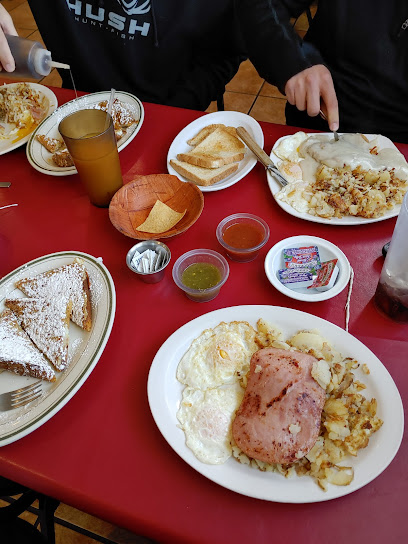
The Great Sand Dunes Oasis Restaurant
Discover the perfect blend of American cuisine and breathtaking views at The Great Sand Dunes Oasis Restaurant, a must-visit for travelers in Colorado.
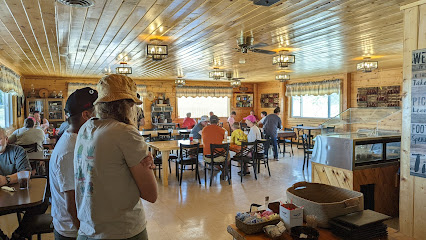
Local Phrases about Great Sand Dunes National Park and Preserve
-
- HelloHowdy
[h-ow-d-ee] - GoodbyeSee ya
[s-ee y-ah] - YesYep
[y-eh-p] - NoNah
[n-ah] - Please/You're welcomePlease and thank ya
[pl-ee-z and th-ah-nk y-ah] - Thank youThanks a bunch
[th-anks-ah b-uh-n-ch] - Excuse me/SorryPardon me
[p-ah-rd-oh-n m-ee] - How are you?Howdy partner?
[h-ow-d-ee p-ah-r-t-n-er] - Fine. And you?Jus' fine. How 'bout you?
[j-uh-s f-ah-n. h-ow b-ow-t y-ou] - Do you speak English?Ya speak English?
[y-ah sp-ee-k- eh-n-gl-ih-sh] - I don't understandI ain't catchin' on
[i a-ih-n't c-ah-t-ch-ih-n' aw-n]
- HelloHowdy
-
- I'd like to see the menu, pleaseCan I check out the grub options?
[c-ah-n a-ih ch-eh-k aw-t th-uh gr-ah-b aw-p-sh-uh-ns] - I don't eat meatI'm veggie
[i a-ih-m v-eh-g-ee] - Cheers!Cheers!
[ch-ee-r-z] - I would like to pay, pleaseCan I settle up?
[c-ah-n a-ih s-eh-t-t-l- uh-p]
- I'd like to see the menu, pleaseCan I check out the grub options?
-
- Help!SOS!
[s-oh-s] - Go away!Shoo!
[sh-oo] - Call the Police!Get the sheriff!
[g-et th-uh sh-ehr-ih-f] - Call a doctor!Fetch a doc!
[f-eh-ch ah d-ah-k] - I'm lostI'm turned around
[i a-ih-m t-er-n-d aw-n-d] - I'm illI'm feelin' poorly
[i a-ih-m f-ee-l-ih-n' p-oh-r-l-ee]
- Help!SOS!
-
- I'd like to buy...I'm fixin' to purchase...
[i a-ih-m f-ih-ks-ih-n' t-uh p-er-ch-ah-s] - I'm just lookingJust browsin'
[j-uh-s-t b-r-ow-z-ih-n'] - How much is it?How much fer that?
[h-ow m-uh-ch f-er th-ae-t] - That's too expensiveThat's a mite pricey
[th-ae-t-s ah m-ai-t pr-ai-s-ee] - Can you lower the price?Can ya cut a deal?
[c-ah-n y-ah c-uh-t ah d-ee-l]
- I'd like to buy...I'm fixin' to purchase...
-
- What time is it?What's the time?
[wh-ae-t-s th-uh t-ah-m] - It's one o'clockIt's one
[it-s w-ah-n] - Half past (10)Half ten
[h-ae-f t-eh-n] - MorningMornin'
[m-aw-r-n-ih-n'] - AfternoonAfternoon
[ae-f-t-er-n-oo-n] - EveningEvenin'
[ee-v-n-ih-n'] - YesterdayYest'day
[y-eh-st-d-ay] - TodayToday
[t-uh-d-ay] - TomorrowTomorra
[t-oh-m-aw-r-ah] - 1One
[w-uh-n] - 2Two
[t-oo] - 3Three
[th-r-ee] - 4Four
[f-oh-r] - 5Five
[f-ai-v] - 6Six
[s-ih-k-s] - 7Seven
[s-eh-v-n] - 8Eight
[ay-t] - 9Nine
[n-ay-n] - 10Ten
[t-eh-n]
- What time is it?What's the time?
-
- Where's a/the...?Where's the...
[wh-ear-s th-eh] - What's the address?Where's it at?
[wh-ear-s ih-t ae-t] - Can you show me (on the map)?Can ya point it out (on the map)?
[c-ah-n y-ah p-oh-ih-n-t ih-t aw-t (aw-n th-uh m-ae-p)] - When's the next (bus)?When's the next (bus)?
[wh-eh-n-s th-eh n-eh-k-s-t (b-ah-s)] - A ticket (to ....)A ticket (to ....)
[ey t-ih-k-ih-t (t-oo ....)]
- Where's a/the...?Where's the...
History of Great Sand Dunes National Park and Preserve
-
The Great Sand Dunes region has been inhabited by humans for thousands of years. Archaeological evidence suggests that Native American tribes, such as the Ute, Apache, and Navajo, have been living and traveling through the area for over 11,000 years. These early inhabitants left behind artifacts such as arrowheads, pottery, and petroglyphs, providing a glimpse into their daily lives and cultures.
-
In the late 17th century, Spanish explorers ventured into the region. The Spanish were among the first Europeans to document the Great Sand Dunes. They referred to the area as 'Medano,' which translates to 'sand dune' in Spanish. Their exploration routes and interactions with Native American tribes marked the beginning of European influence in the region.
-
In 1807, American explorer Zebulon Pike embarked on an expedition to explore the southern portion of the Louisiana Purchase. During his journey, Pike and his team encountered the Great Sand Dunes. Although Pike did not fully explore the dunes, his accounts brought attention to the unique landscape and sparked further interest in the region.
-
Throughout the late 19th and early 20th centuries, the Great Sand Dunes area saw an influx of settlers and homesteaders. These early pioneers were drawn to the region by the promise of fertile land and new opportunities. Many attempted to farm the land, but the harsh conditions and shifting sands made agriculture difficult. Despite these challenges, small communities and ranches were established in the surrounding areas.
-
In 1932, President Herbert Hoover established the Great Sand Dunes National Monument to protect the unique landscape and its ecological and geological significance. The designation helped to preserve the area from further development and highlighted its importance as a natural wonder. The monument status also paved the way for increased tourism and scientific research.
-
In 2000, the Great Sand Dunes National Monument was redesignated as Great Sand Dunes National Park and Preserve. This expansion, authorized by Congress, added additional land to the protected area, including the surrounding mountains and wetlands. The new status aimed to offer greater protection to the diverse ecosystems and provide more opportunities for recreation and education.
-
The Great Sand Dunes hold deep cultural significance for the Native American tribes in the region. It is considered a sacred place by many, with stories and legends passed down through generations. The dunes are not only a physical landmark but also a spiritual symbol, representing resilience and the enduring connection between the people and the land.
Great Sand Dunes National Park and Preserve Essentials
-
Great Sand Dunes National Park and Preserve is located in southern Colorado. The nearest major airports are Denver International Airport (approximately 240 miles away) and Colorado Springs Airport (approximately 170 miles away). From these airports, you can rent a car and drive to the park. The most common route from Denver is via I-25 South and US-160 West. Public transportation options are limited, so driving is the most convenient way to reach the park.
-
Once at the park, the primary mode of transportation is by car. The park has several parking areas near popular trailheads and the Visitor Center. There are no public transportation services within the park. Biking and hiking are popular ways to explore the dunes and surrounding areas. Be sure to have a reliable map and plenty of water if you plan on hiking or biking.
-
The official currency in the United States is the US Dollar (USD). Credit cards are widely accepted at the Visitor Center, campgrounds, and nearby towns. It is advisable to carry some cash for entrance fees, as well as for any purchases at small local businesses or vendors that may not accept cards. ATMs are available in nearby towns such as Alamosa.
-
Great Sand Dunes National Park and Preserve is generally a safe destination for tourists. However, it's important to be prepared for the natural environment. The sand can get extremely hot during the day, so wear appropriate footwear. Bring plenty of water to stay hydrated, and be aware of the weather conditions. There are no high-crime areas targeting tourists in the vicinity, but always secure your belongings and avoid leaving valuables in your car.
-
In case of an emergency, dial 911 for immediate assistance. The Visitor Center can provide information and assistance for non-urgent matters. The nearest medical facilities are in Alamosa, approximately 35 miles away. It is recommended to have travel insurance that covers medical emergencies and outdoor activities. Always inform someone of your plans if you are hiking or exploring remote areas.
-
Fashion: Do wear comfortable, weather-appropriate clothing and sturdy footwear for hiking. Don't wear flip-flops or sandals when walking on the dunes as the sand can get very hot. Religion: There are no specific religious customs to be aware of in the park, but always show respect for nature and fellow visitors. Public Transport: There is no public transport within the park, so plan to drive or hike. Greetings: Do greet fellow hikers and visitors with a friendly nod or hello. Eating & Drinking: Do bring your own food and water, as there are limited dining options within the park. Don't leave trash behind; practice Leave No Trace principles.
-
To experience Great Sand Dunes National Park and Preserve like a local, visit during the early morning or late afternoon to avoid the heat and enjoy the stunning light on the dunes. Bring a sled or sandboard to slide down the dunes, a popular activity among locals. Explore the nearby Zapata Falls for a refreshing break. Engage with park rangers at the Visitor Center to learn about the unique ecosystem and history of the area. Don't miss the chance to stargaze; the park is recognized for its dark skies and offers excellent opportunities for night sky viewing.
Nearby Cities to Great Sand Dunes National Park and Preserve
-
Things To Do in Canon City
-
Things To Do in Salida
-
Things To Do in Pueblo
-
Things To Do in Trinidad
-
Things To Do in Pagosa Springs
-
Things To Do in Colorado Springs
-
Things To Do in Gunnison
-
Things To Do in Taos
-
Things To Do in Monument
-
Things To Do in Crested Butte
-
Things To Do in Leadville
-
Things To Do in Ouray
-
Things To Do in La Junta
-
Things To Do in Aspen
-
Things To Do in Breckenridge

